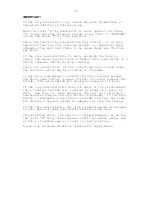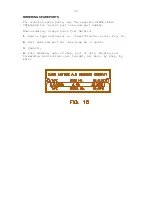
27
ENGINE STOPS
a. Lack of fuel
b. Air or water in fuel system
c. Choked fuel filter
d. Overload
e. Overheating
f. Loss of compression
g. Lack of lubricating oil
LOSS OF POWER
a. Loss of compression
b. Chocked exhaust system
c. Fuel injector dirty
d. Choked fuel filter
e. Worn engine
OVERHEATING
a. Thermostat faulty
b. Low coolant level
c. Water pump belt to slack
d. Overload
e. Lubricating oil level too low
f. Obstructed cooling water system
ENGINE FAILS TO BE STOPPED
a. Automatic fuse is out. Press the fuse button.
b. Stop solenoid linkage is loose.
c. Defect stop solenoid.
DESCRIPTION OF THE ELECTRICAL OPERATED STOP/START SYSTEM.
The lever "A" has two functions:
1. To stop the engine. The engine is stopped when the lever
"A" is moved fully anticlockwise until it is against the stop
screw "C".
2. The lever is reset to start position (excess fuel) when it
is moved fully clockwise until it is against the screw "B".
The electrical stop solenoid takes care of those two
functions. When pressing the stop button on the instrument
table, the stop solenoid is energised, and the lever "A" is
pulled to its stop position.
As soon as the stop button is released, the return spring
inside the rubber boot moves the lever back to its start
position.




































